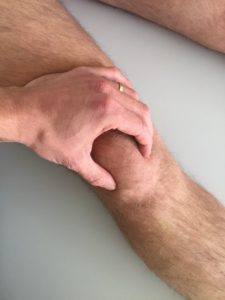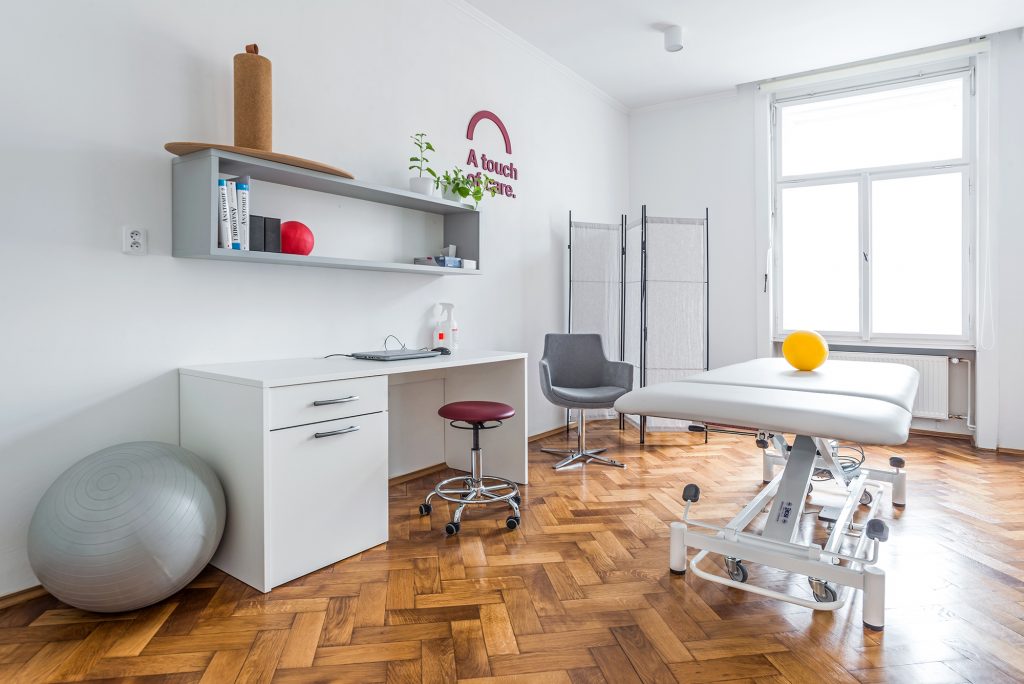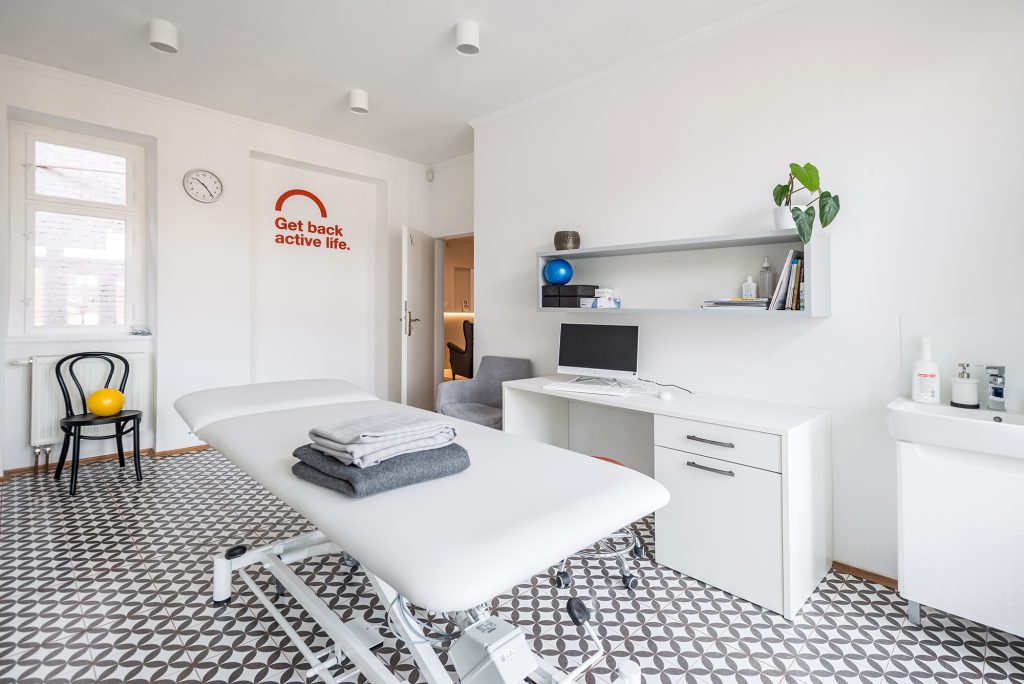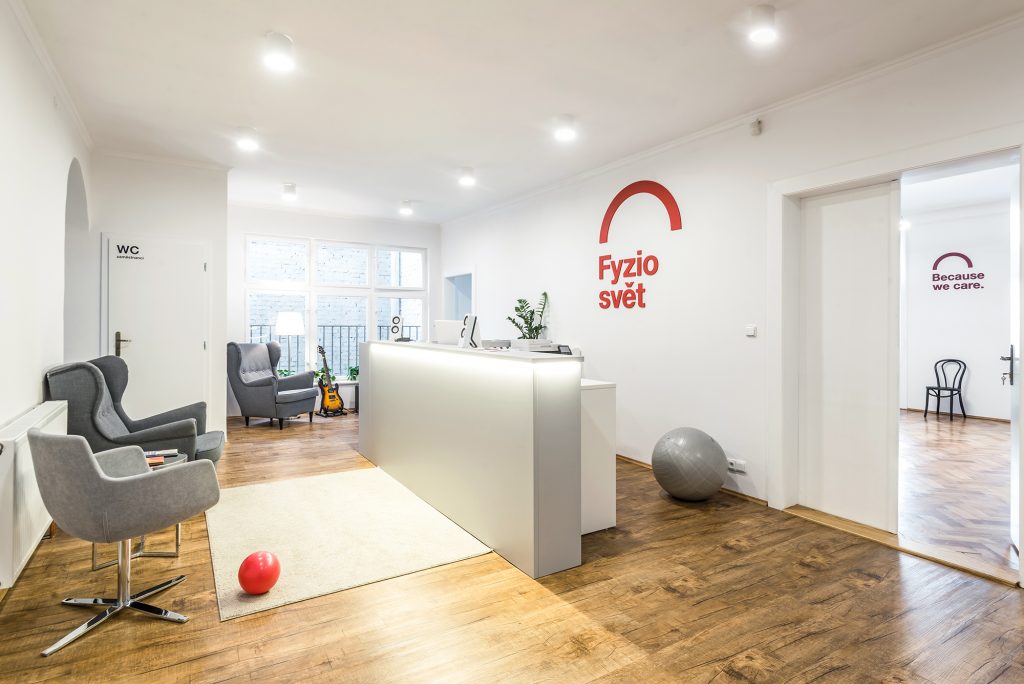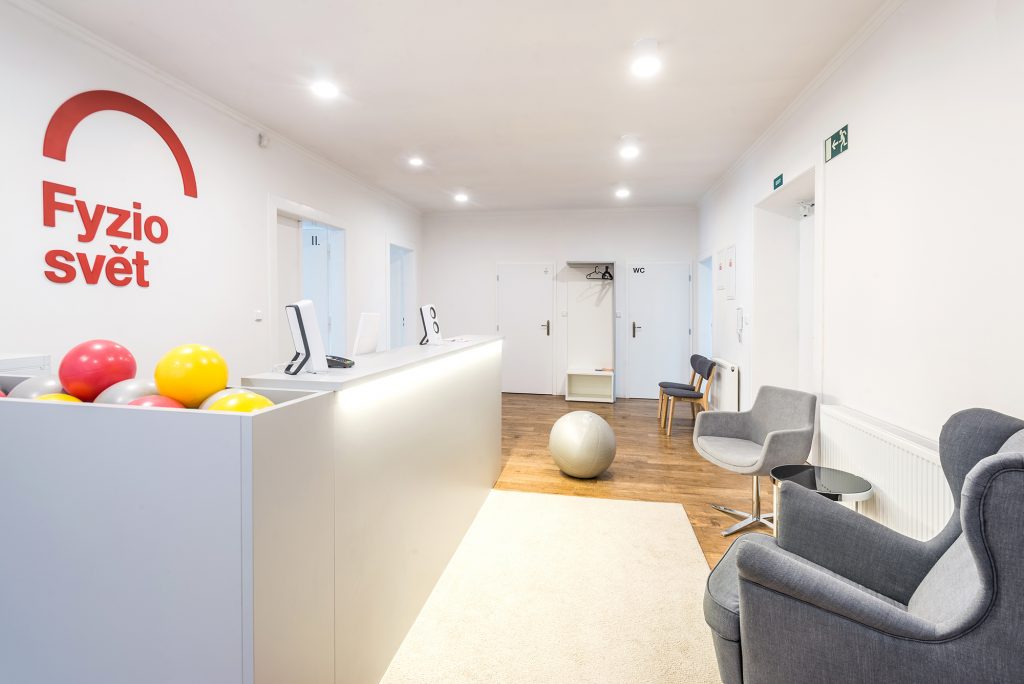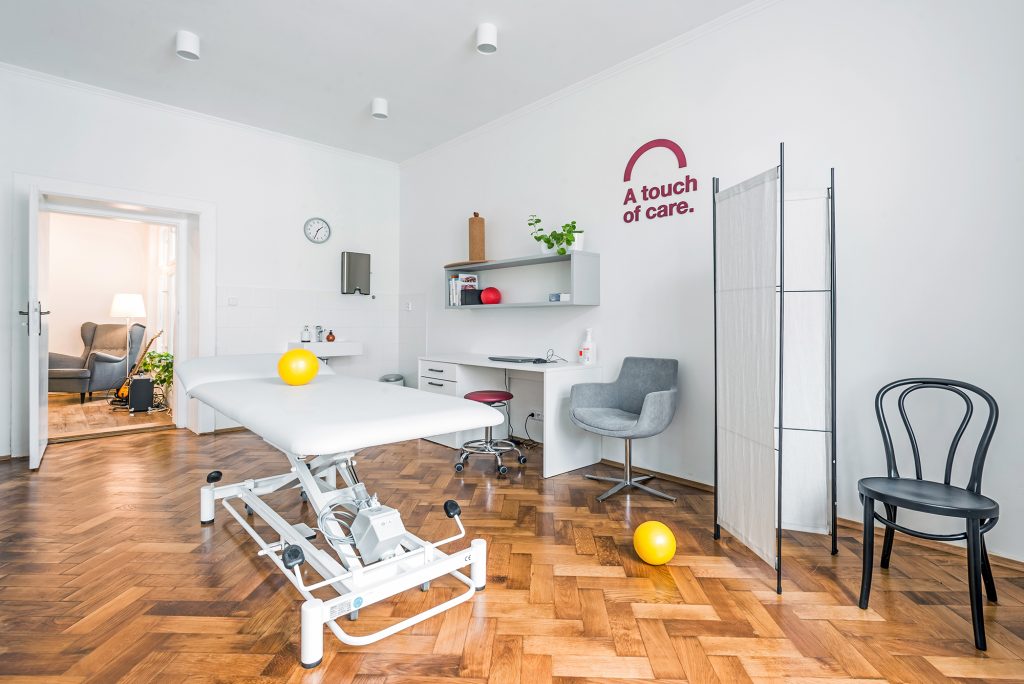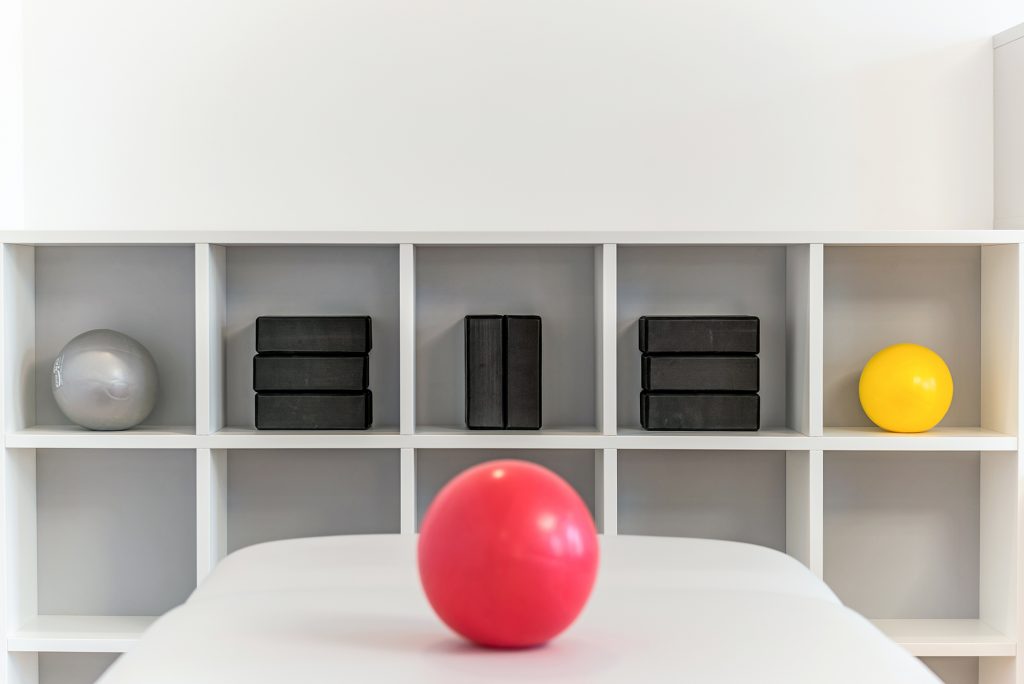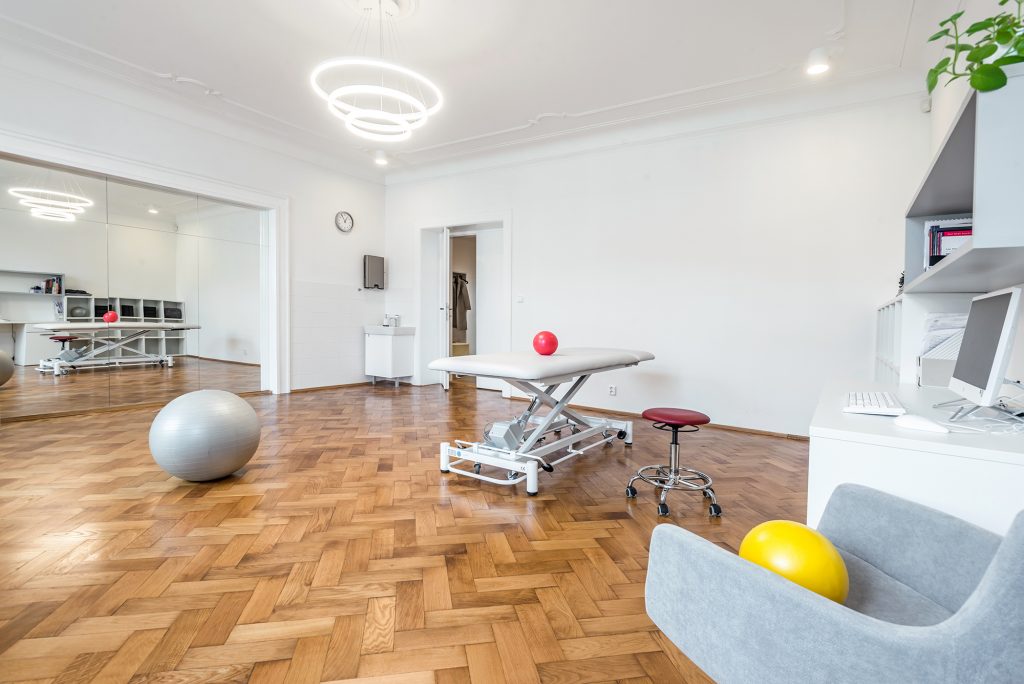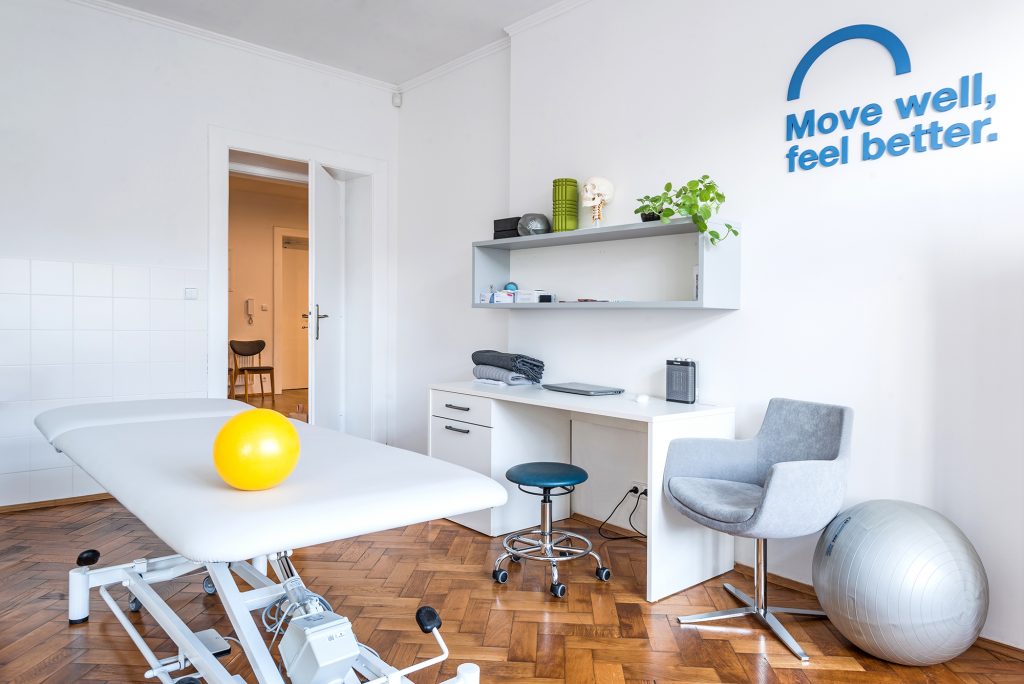7 Most Common Causes of Knee Pain
The knee joint is the largest joint in the body and is critical for movement—walking, running, jumping, etc. However, this also makes it one of the most vulnerable joints. The best way to prevent knee pain is through prevention, which includes balanced and appropriate joint loading, regular exercises to strengthen surrounding muscles, compensatory exercises to minimize muscle imbalances, a balanced diet, and maintaining a healthy body weight.
Knee pain can affect people of all ages. For young individuals, it’s often due to injuries, while in athletes, the cause is usually overtraining and overload. In older people, the pain often results from gradual structural changes due to wear and tear. In this article, we will introduce you to seven of the most common reasons behind knee pain. These occur across various age groups and can be effectively managed with timely prevention and compensation. Physiotherapy plays a major role in treating these conditions and significantly reduces the risk of recurrence.
1. Meniscus Injury
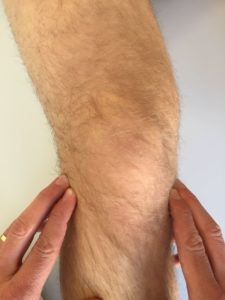
The meniscus consists of crescent-shaped cartilage that cushions impacts and helps stabilize the knee joint. A common cause of meniscus injury occurs when a person quickly rotates their leg above the knee while the lower part of the leg remains stationary, such as during a skiing fall. Another mechanism, aside from injury, is prolonged physical stress, like excessive squatting with heavy weights. This can lead to a tear or detachment of the meniscus. If a piece of the meniscus becomes loose, it can cause movement restrictions and block knee motion. Special tests conducted by an orthopedic specialist or physical therapist can often diagnose meniscus injuries.
How to recognize a meniscus injury:
- Pain on the side or center of the knee
- A popping or “locking” sensation in the knee
- Swelling and inability to fully bend the knee
- Feelings of instability or insecurity while moving
- Sharp pain when rotating the leg (such as catching the toe)
- Pain in a deep squat or cross-legged position
- The knee frequently swells after activity
Treatment of meniscus injuries in physical therapy:
If the meniscus is severely damaged, surgery may be recommended by an orthopedic specialist. Most meniscus injuries are treated with arthroscopy, where small incisions are made, and the joint is repaired. The surgeon may stitch, remove part or all of the damaged meniscus, and smooth any damaged cartilage. The treatment strategy depends on the extent of the injury, range of motion, pain intensity, patient age, and physical activity level. Physical therapy begins immediately after surgery, focusing on reducing swelling, restoring joint movement, and strengthening muscles around the knee.
Not all meniscus injuries require surgery. Conservative treatment involves rest, icing, compression bandages or knee braces, and, later, physical therapy. In the early stages, knee taping can also provide support. Physical therapy techniques, such as shockwave therapy, manual techniques to release fascia and muscle spasms, and exercises that focus on stability, are used to restore joint stability and prevent re-injury.
2. Ligament Injury
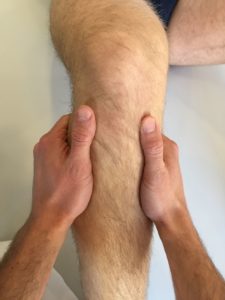
Ligaments are elastic tissues that connect bones and provide stability and strength to the joint. The knee contains four main ligaments. The anterior cruciate ligament (ACL) in the center of the knee controls forward motion and rotation of the tibia. The posterior cruciate ligament (PCL) at the back controls backward movement of the tibia. The medial collateral ligament (MCL) provides stability to the inner knee, while the lateral collateral ligament (LCL) stabilizes the outer knee. Ligament injuries are often accompanied by meniscus tears.
Ligament injuries can occur during trauma, such as a car accident or slipping, but they most commonly happen during sports activities. The ACL is frequently injured due to sudden rotational movements, such as when the foot remains planted while the knee turns in another direction. Skiing, basketball, and football are high-risk sports for this injury. PCL injuries are often caused by a direct blow to the knee or landing on a fully extended leg. MCL injuries are more common than LCL injuries and typically result from a blow to the side of the knee, such as during hockey or football.
How to recognize a ligament injury:
- Sudden pain associated with trauma (bad landing, impact, rotational injury)
- A popping sound during the injury
- Swelling that lasts for several days, with blood often present in the knee during aspiration
- A feeling of instability in the knee, especially when walking on slippery or uneven surfaces
- Inability to bear weight without pain
- Difficulty fully bending or straightening the knee
Treatment of ligament injuries in physical therapy:
Treatment can be conservative or surgical. Conservative treatment aims to calm the joint, reduce swelling, and relieve pain, followed by intensive strengthening of the muscles that stabilize the joint. Strong muscles can compensate for ligament instability. For example, strengthening the hamstring muscles can help stabilize the knee after an ACL injury. Physical therapy focuses on increasing muscle strength and improving coordination, which is equally important as muscle strength for proper joint stability.
If the ligament is severely damaged, surgery may be necessary. A ligament reconstruction (such as ACL reconstruction) may be recommended. After surgery, physical therapy is essential for reducing swelling, gradually restoring range of motion, rebuilding muscle strength, and ensuring joint stability for a return to activity.
3. Patellofemoral Pain Syndrome (Runner’s Knee)
Patellofemoral syndrome, or runner’s knee, is a common cause of knee pain, particularly under the kneecap. It occurs when the muscles around the knee exert excessive pressure on the cartilage of the kneecap (patella), causing pain and discomfort. The patella becomes misaligned and rubs against the femur, damaging the cartilage and leading to pain.
Common causes include overuse, poor sports techniques (e.g., improper squatting or running), muscle imbalances, and knee instability following injuries like meniscus tears. Flat feet can also contribute by increasing asymmetrical knee load. This condition is typical in children and young adults under 35, often triggered by increased training or a change in physical activity.
How to recognize patellofemoral syndrome:
- Pain around or beneath the kneecap, worsened with movement
- Grinding, popping, or a sensation of “scraping” within the knee during movement
- The knee may rarely swell (unlike ligament or meniscus injuries)
- Pain during prolonged sitting with bent knees (e.g., driving, sitting on a bus), relieved by straightening the leg
- Pain during extended activity, running, hiking, or exercising
Treatment of patellofemoral syndrome in physical therapy:
Treatment involves rest, ice, and possibly anti-inflammatory medications. If caught early, the damaged cartilage can partially regenerate. However, addressing the underlying causes of excessive knee load is essential. Physical therapy focuses on correcting faulty movement patterns, releasing muscle tension, and improving the strength and precision of knee muscles. Correcting poor movement habits helps prevent cartilage from being overloaded and allows it to regenerate.
4. Skokanské koleno – bolest pod kolenem
Pain in the front of the knee is often caused by overloading the ligament between the kneecap and the shinbone, a condition known as “jumper’s knee.” Another related issue is the overloading of the ligament’s attachment a few centimeters below the knee, called Osgood-Schlatter disease.
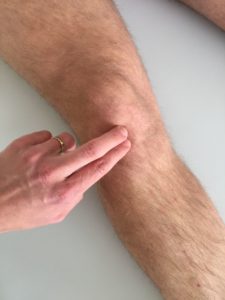
Pain in the front of the knee is often caused by overloading the ligament between the kneecap and the shinbone, a condition known as “jumper’s knee.” Another related issue is the overloading of the ligament’s attachment a few centimeters below the knee, called Osgood-Schlatter disease.
Jumper’s Knee or Patellar Tendinopathy results from repeated and long-term stress on the ligamentous structure of the knee joint, specifically the patellar ligament (between the kneecap and the shinbone). This ligament is a strong continuation of the quadriceps tendon, attaching to the shinbone. With repeated micro-traumas, such as those experienced during jumping, the ligament becomes overloaded. Over time, small tears form in the ligament, which heal with scar tissue that is often infiltrated by nerve endings, causing pain when further stressed.
How to recognize jumper’s knee:
- Pain at the lower part of the kneecap
- Pain during jumping or when extending the knee
- Swelling around the patellar ligament (between the kneecap and shinbone)
- Generally, the entire knee joint does not swell significantly
This condition commonly affects athletes involved in jumping sports, such as sprinters, volleyball players, basketball players, and racket sports players. Men are more frequently affected. The progression of the condition can be categorized into four stages, beginning with pain after exercise, then during activity, followed by pain at rest, and in severe cases, degeneration and rupture of the patellar ligament.
Treatment of jumper’s knee in physical therapy:
The initial treatment for jumper’s knee focuses on reducing pain and swelling. Cold therapy, rest, taping, and anti-inflammatory medication (like ibuprofen) are commonly used. Stretching and strengthening exercises for the knee muscles are gradually introduced, along with coordination exercises to improve precision in muscle movements. Physical therapy techniques such as shockwave therapy can enhance tissue metabolism, reduce muscle tension, and aid in tissue healing.
Osgood-Schlatter Disease
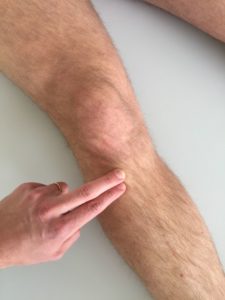
Osgood-Schlatter disease is a condition causing pain and swelling below the knee joint, typically in growing children. It affects the point where the patellar ligament attaches to the top of the shinbone (tibial tuberosity). The excessive pulling from the thigh muscles stresses the ligament’s attachment point, leading to inflammation. If the overload persists, the ligament may partially or completely detach from the bone at the point of attachment. This condition is most common in young athletes aged 10-15, especially those involved in sports requiring frequent jumping or running on hard surfaces.
How to recognize Osgood-Schlatter disease:
- Painful “bump” below the knee on the shinbone
- Difficulty kneeling
- Redness, swelling, and warmth at the ligament’s attachment site
- Usually, no significant swelling of the entire knee joint
- Common in young athletes
Treatment of Osgood-Schlatter disease in physical therapy:
Osgood-Schlatter disease typically resolves with a reduction in sports activity. Activities that require running, jumping, or frequent knee bending should be temporarily limited and replaced with techniques to release tension in the front thigh muscles, which are often overly tight. Physical therapy focuses on relieving tension in these muscles and improving their coordination to prevent overloading the ligament attachment point. If there is swelling, techniques like lymphtaping or flossing can reduce it and support the healing process.
5. Pain on the Outer Side of the Knee – Iliotibial Band Syndrome (ITBS)
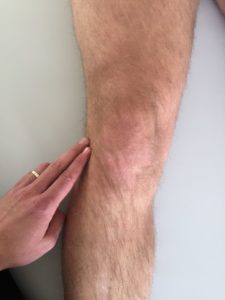
Iliotibial Band Syndrome (ITBS), also called runner’s knee, is one of the most common overuse injuries among runners. It manifests as pain on the outer side of the knee during physical activity and often goes away when at rest. Sometimes, runners cannot run but can engage in other activities like walking, cycling, or tennis without discomfort. Running downhill tends to worsen the symptoms. ITBS results from excessive repetitive movements, commonly seen in distance runners, cyclists, and rowers. The pain is caused by the iliotibial band rubbing against the bony prominence of the thigh bone. As the knee bends, the band shifts and creates friction, leading to inflammation.
Studies show that runners with ITBS often have weak hip abductor muscles, and after a six-week rehabilitation program focusing on strengthening these muscles, symptoms resolved in 92% of cases.
How to recognize iliotibial band syndrome:
- Pain or burning on the outer side of the knee during activity
- Clicking or snapping sensation on the outer knee
- Warmth and redness at the site of pain
- Pain usually worsens with running or long walks, especially on inclines
Treatment of iliotibial band syndrome in physical therapy:
The standard treatment includes anti-inflammatory measures, icing, stretching the iliotibial band, and modifying activity to avoid pain. Shockwave therapy and foam rolling are effective in releasing the tension in the iliotibial band. Physical therapy often addresses other contributing factors, such as restricted hip movement or lower back issues, and improves running technique by releasing tight areas and retraining healthy movement patterns.
6. Pain in the Back of the Knee
Pain in the back of the knee is a common complaint, but it can have various causes. The pain might appear suddenly or develop gradually, with or without swelling. It might be difficult to fully extend the knee. The following are the most common causes of pain behind the knee:
Baker’s Cyst
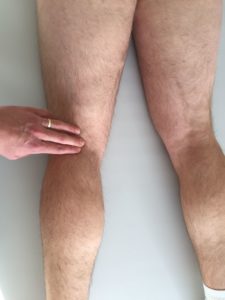
One of the most common causes of pain at the back of the knee is a Baker’s cyst, a bulge filled with synovial fluid. It often occurs after knee injuries, in people with gout, osteoarthritis, or rheumatoid arthritis. Athletes who overuse their knees, such as volleyball players and footballers, are also prone to developing this condition. Symptoms include a feeling of pressure or limited movement when bending the knee.
Tendon Pain Behind the Knee: A pulled hamstring muscle or calf muscle can cause inflammation and pain at the back of the knee. This can happen after sudden movements such as a sprint or lunge. Micro-tears in the muscle may lead to inflammation, causing discomfort around the back of the knee.
Joint Injury: Damage to internal knee structures, such as cartilage or the posterior cruciate ligament, can cause pain in the back of the knee. Osteoarthritis may also present as pain behind the knee.
Treatment of pain behind the knee in physical therapy:
If a Baker’s cyst becomes large and painful, an orthopedic surgeon might drain it (aspiration) or inject medication to reduce inflammation. In severe cases, surgical removal might be needed. Physical therapy focuses on releasing muscle tension, particularly in the hamstrings, to prevent further irritation of the area surrounding the cyst. Manual therapy techniques such as myofascial release can reduce the tension in the muscles and alleviate symptoms.
For other causes of pain behind the knee, treatment depends on the underlying issue. Physical therapists work to identify and treat the root cause of the pain, whether it’s muscular, ligamentous, or structural.
7. Referred Pain to the Knee
Referred pain means that the discomfort you feel in one area of your body is caused by an issue elsewhere. This is common with knee pain. Here are some typical sources of referred knee pain:
From the Hip: Hip problems can sometimes manifest as knee pain, even if the knee itself is healthy. For instance, one of the early signs of hip arthritis is pain referred to the groin, shin, or knee. Misdiagnosing knee pain when the issue is in the hip can lead to ineffective treatment.
From Overloaded Muscles (Trigger Points): Trigger points in the gluteal muscles and thighs can also refer pain to the knee. Overuse of muscles in the hips or thighs, particularly in people with sedentary lifestyles, can lead to pain radiating down to the knee.
From the Feet: Foot issues, such as improper walking patterns, can significantly impact the knees. For example, if the feet roll excessively inward or outward during walking, it can place undue strain on the knees. Limited ankle mobility can also lead to knee pain.
From Internal Organs or Scars: Knee pain can also originate from internal organ problems, such as kidney issues, or from scars, like those following abdominal surgeries (appendectomy, gallbladder removal, or C-section). These issues disrupt the body’s muscle chains, leading to biomechanical imbalances that eventually stress the knee joint.
Treatment of referred pain in physical therapy:
Treating referred pain requires a holistic approach, focusing on the underlying cause. This might involve joint mobilization, visceral manipulation to release tension in internal organs and scars, and correcting faulty posture or movement patterns through muscle relaxation or strengthening exercises.
